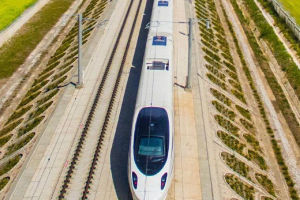
Demolition Of Skyscrapers

Prowess. However, their lifespan is not indefinite, and various factors contribute to their longevity.
It isn't easy to provide an exact lifespan for all skyscrapers, as each building's maintenance, design, and materials differ; they can generally withstand the test of time for several decades.
The lifespan of skyscrapers largely hinges on the quality of their construction and regular maintenance.
Well-built skyscrapers with robust foundations, durable materials, and proper upkeep can last a century or more.
However, environmental factors and changing needs can influence the lifespan of skyscrapers.
Exposure to moisture, temperature fluctuations, seismic activity, and air pollution can deteriorate the building's structural integrity over time, necessitating extensive repairs or demolition.
Related
 Deserts and the Gobi are special formations on the surface of the land, making it particularly inhospitable.
Deserts and the Gobi are special formations on the surface of the land, making it particularly inhospitable.
 In today's technologically advanced world, crops are harvested much differently than in the past.
In today's technologically advanced world, crops are harvested much differently than in the past.
 High-speed rail is one of the safest forms of transportation, and this has to do with several things.
High-speed rail is one of the safest forms of transportation, and this has to do with several things.
 The next generation of construction materials might come from the sands of the desert.
The next generation of construction materials might come from the sands of the desert.
 Quartz crystals: Earth's timekeepers shaping modern connectivity.
Quartz crystals: Earth's timekeepers shaping modern connectivity.
 Exploring wheat cultivation techniques and the functional benefits of wheat.
Exploring wheat cultivation techniques and the functional benefits of wheat.
Technological advancements and shifts in urban planning may also evolve the requirements and preferences of occupants, rendering older skyscrapers functionally obsolete.
Anyway, every skyscraper will one day be unoccupied and abandoned. At that point, the city may need to consider demolishing it.
Traditional demolition techniques, such as explosives or wrecking balls, are effective but can generate immense waste and pose hazards to the surrounding environment and communities.

One potential approach for future demolition is deconstruction, which involves carefully disassembling the skyscraper and salvaging reusable materials.
Deconstruction reduces waste, minimizes environmental impact, and provides an opportunity to repurpose valuable resources.
Structural elements, building materials, and fixtures can be carefully dismantled and reused in new construction projects or recycled.
Another emerging method is implosion demolition, where strategic explosives are placed throughout the building to implode it inward, levelling it floor by floor.
It requires detailed planning, expert engineering, and utmost precision to ensure the debris is contained and no harm is caused to the surrounding community.
Additionally, robotics, automation, and engineering advancements offer possibilities for future demolition techniques.
Remote-controlled machinery and robots can be developed to carefully deconstruct skyscrapers, removing the risk to human life and increasing efficiency.
These technologies can be equipped with sensors and AI capabilities to assess structural integrity, identify potential hazards, and facilitate safe and controlled demolition processes.
Developed countries started constructing super-high buildings a long time ago and now have mature experience in demolition.
The cost of demolition is also not high, as some building materials can be recycled in the process. So, there is no need to worry too much about the future of ultra-high buildings.